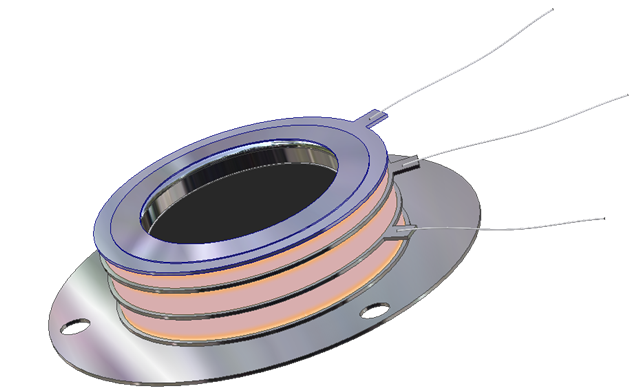Del Mar Photonics
A linear radiofrequency quadrupole ion
trap for the cooling and bunching of radioactive ion beams (pdf)
A linear radiofrequency quadrupole ion guide and beam buncher has been
installed
at the ISOLTRAP mass spectrometry experiment at the ISOLDE facility at CERN.
The apparatus is being used as a beam cooling, accumulation, and bunching
system.
It operates with a buffer gas that cools the injected ions and converts the
quasicontinuous
60-keV beam from the ISOLDE facility to 2.5-keV beam pulses with
improved normalized transverse emittance. Recent measurements suggest a capture
efficiency of the ion guide of up to 40 % and a cooling and bunching efficiency
of at
least 12 % which is expected to still be increased. The improved ISOLTRAP setup
has so far been used very successfully in three on-line experiments.
Microchannel Plates, Detectors
and Imaging Systems
Examples of research applications:
Studies of the atomic clusters at the
University of Virginia -
Amber Post
Featured MCP customer:
The Castleman Group at PSU
MCP home -
MCP references
MCP-GPS-46/2-CF6" Open
MCP imaging detector mounted on CF6" flange -
MCP-GPS and
MCP-IFP imaging detectors
MCP-MA -
Detecting short proton
beam from a picosecond CO2 laser ionized H2 plasma
MCP-MA25/2 are used in aSPECT to
study the background
MCP setup for velocity map imaging apparatus
Microchannel Plate Detector (MCP) setup for Plasma Desorption Mass
Spectrometry (PDMS)
MCP detector for high resolution ion time-of-flight analysis for measuring
molecular velocity distributions
X-ray detection system based on the MCP/phosphor screen assembly
MCP + phosphorous screen for imaging of XUV radiation (14eV- 160-eV) in high harmonics experiments
Exchanging MCPs in Time-of-Flight detectors
Microchannel Plates, Detectors
and Imaging Systems - Open MCP-MA
- MCP-MA applications -
MCP-MA assembled -
Applications
 |
Open Microchannel Plate Detector
MCP-MA25/2 -
now in stock!
Microchannel Plate Detectors MCP-MA series are an open MCP detectors
with one or more microchannel plates and a single metal anode. They are intended
for time-resolved detection and make use of high-speed response properties of
the MCPs. MCP-MA detectors are designed for photons and particles detection in
vacuum chambers or in the space.
MCP-MA detectors are used in a variety of applications including UV, VUV and EUV
spectroscopy, atomic and molecular physics, TOF mass–spectrometry of clusters
and biomolecules, surface studies and space research.
MCP-MA detectors supplied as a totally assembled unit that can be easily mounted
on any support substrate or directly on a vacuum flange. They also can be
supplied premounted on a standard ConFlat flanges.
buy online -
ask for research discount!
|
